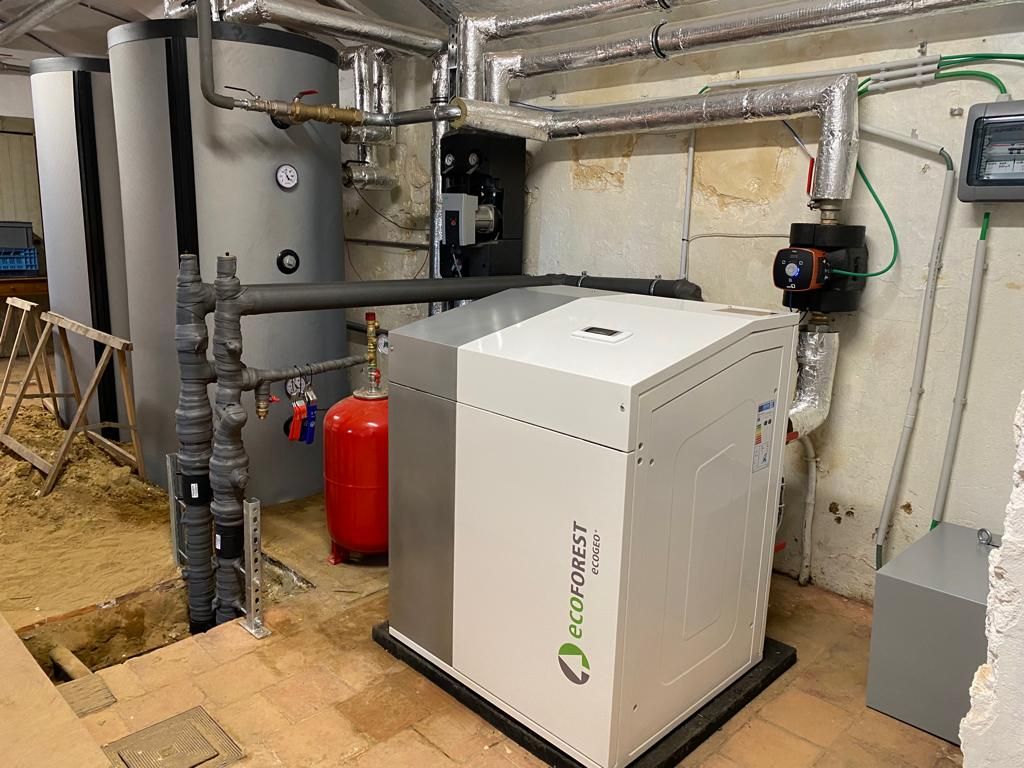01.09.2023 Simone Tresor
Once upon a time there was a prince with a big green heart. To contribute to a better climate, he decided to make his castle more sustainable. It seems like the beginning of a fairy tale, but this story really happened. In Westerlo, Flanders is his castle, which dates back to the 14th century and is heated by hydrothermal energy.
The castle, with its moat and many towers, looks like it straight out of a fairytale book. A hydrothermal facility was installed in the moat surrounding the castle last year. And it must contribute to the heating of the castle in an energy-efficient and environmentally friendly manner.
Cast iron radiators
Prince Simon de Merode is the owner of De Merode Castle in Westerlo. He lives in one part of the castle and uses the other part to organize events and receive visitors. Since Castle de Merode receives many spectators especially in winter, but also houses an art collection, a stable temperature is important. Definitely also to keep the memorial in good shape.
Previously, the castle was heated with natural gas through a network of cast iron radiators. But as the energy decade draws to a close, progress in the gas bill will be astronomical due to the ever-rising gas prices. If you know an ordinary household bill, you can probably imagine the bill hanging over the prince’s head. It’s time to switch to an alternative.
Three heat exchangers in the trench
Equipping the castle with modern technologies is not easy. Given the value of heritage, not everything is permitted. Various alternatives were considered. For example, the classic air and water heat pump was rejected because of the external components and because its efficiency was not enough. Geothermal energy was also reviewed, but its costs were too high.
The water in the pond surrounding the castle is heated by the sun all year round. They extract heat from the pool using three heat exchangers. Since the heat exchangers are at the bottom of the trench, you can’t see them either. Heat enters the heat pumps through a closed system filled with water and glycol through 100 meters of piping. The required delivery temperature turned out to be a stroke of luck after a thorough analysis. With water between 45 and 50 degrees Celsius, adequate heating could be provided at positive outside temperatures. The gas boiler makes a backup for those frigid days and the tap water is hot.

In moderate temperatures when the water in the trench heats up, the heat pump will operate optimally. But the system also continues to function when the canal water temperature is just above freezing. The advantage lies in the fact that heating water via a heat pump requires much less energy than natural gas boilers.
This is the first time that this technology has been used in a large six hundred year old building such as this castle. The project’s executors, the engineering office EXTRAQT from Leuven and the contractor Eco-Technix from Rotselaar, can be proud of. They won the Techlink Award in the Renewal category.
challenges
Jean Denyer of EXTRAQT: “Since the beginning we believed in the inclusive concept. Although very well prepared, we still had to overcome a number of unexpected challenges during the implementation and we learned a lot during the implementation. Technically, this was the first time we In which we fire a heat exchanger The correct position of the exchangers in the water was determined using the tap, but it was a puzzle at first to ensure that all welded joints were under as little tension as possible.
Implementing such an innovative technology in an ancient castle also required some modifications at first so that the gas boiler works well with the heat pump and delivery system. This is a matter of getting to know the building’s characteristics well. But in the end things go very smoothly. The concept has been in the works for eight months and initial results are encouraging.
And they lived happily ever after
Prince de Merode continues to research technologies to make the castle more sustainable. For example, the memorial already has double glazing and they are currently insulating the huge roof. There will also be solar panels on the roof of one of the sheds at the site. A beautiful and sustainable future for the castle and its inhabitants. And they lived a long time
